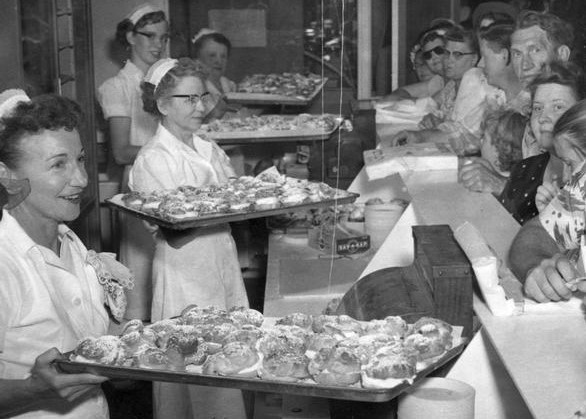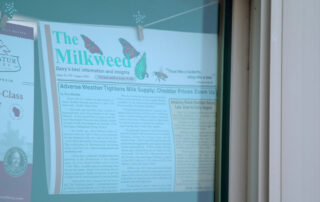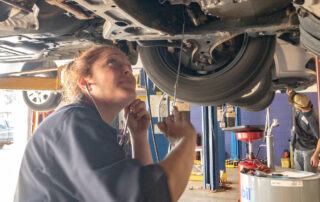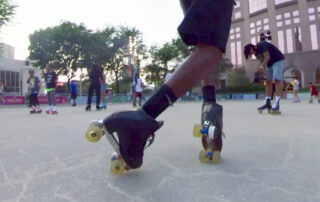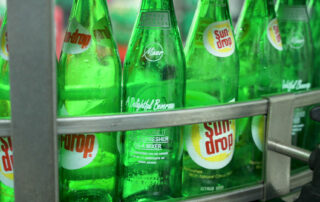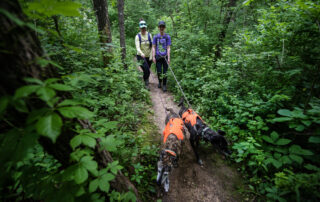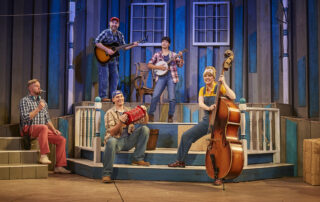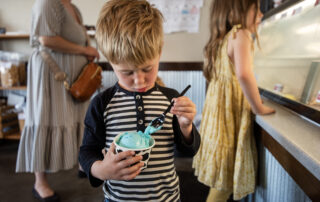People are flocking from across the state to West Allis this week for the Wisconsin State Fair. The best in show will be on display: from cows and pigs, to dog tricks and crocheted scarves, to pies and beer. People come for the rides and the music, stay for the cream puffs and fried…everything.
Writer and historian John Gurda breaks down the history of the State Fair, which has been going on for 167 years.
Cream Puffs and Corn Dogs
It’s August, which means State Fair time for many of us in Wisconsin. Our thoughts turn from workaday concerns to visions of cream puffs and corn dogs, draft horses and draft beer, the bright lights of the midway and the soft lowing of Holsteins in the dairy barns.
This year marks the 126th anniversary of State Fair Park in West Allis, but the event’s roots are even deeper. The annual spectacle began as what organizers called a “Cattle Show and Fair” in Janesville in 1851—just three years after Wisconsin joined the Union. Sponsored by the State Agricultural Society, its purpose was to recognize outstanding farmers and to encourage others to follow their lead. The first fair’s events included a quarter-acre plowing match and the display of a 200-pound squash.
The State Fair led a nomadic existence for more than 40 years, shuttling between Janesville, Milwaukee, Watertown, Madison, and Fond du Lac. In 1891, tired of the constant motion and chronic financial woes, the Agricultural Society decided to guarantee strong attendance by planting their event in the state’s population center. The first fair on the present West Allis grounds was held in 1892.
Although agriculture remained its primary focus, the State Fair offered any number of other attractions. A dog-powered butter churn appeared in 1900. A locomotive collision was the grandstand feature in 1902, foreshadowing the demolition derbies of later years. In 1909 sculptors fashioned a bust of President Taft from Wisconsin butter, and in 1913 a group of intrepid motorists played an exhibition match of auto polo.
More familiar attractions appeared later in the century. In 1924 Wisconsin’s bakers sold their first cream puff, and in 1939 the Green Bay Packers beat the New York Giants in the NFL championship game, which was played on the race track’s infield. One year later, 60 dairy queens were honored at a Dairy Ball in the park’s Modernistic Ballroom.
Over the course of a century, State Fair Park became a self-contained world of contrasting sights and sensations. Some fairgoers flocked to the aromatic clutter of the food concessions. Others sought out the green breathing space of the DNR grounds or the endearing tackiness of the commercial exhibits.
For many of us who grew up in Wisconsin, State Fair Park is also a treasure-house of memories, not all of them pleasant. As a little kid in the 1950s, I was scared witless by a huge papier-mache likeness of Alice in Dairyland, a homemade goddess who could roll her eyes, move her arms, and even talk. Years later, when I saw a cult film called The Attack of the 50-foot Woman, my thoughts shot back to the gigantic Alice at Fair Park.
But the fair’s role in Wisconsin life has been just as gigantic. Since moving to its present site in 1892, the event has been a bridge between Milwaukee and the rest of Wisconsin. With the possible exception of the grocery store, no place in the state serves more admirably as a meeting place of city and country. Milwaukeeans realize they are Wisconsinites during the fair, and residents of outlying counties have a chance to absorb the sights and sounds of their state’s metropolis. At 126 years and counting, I’m sure that bridge will hold for generations to come.
